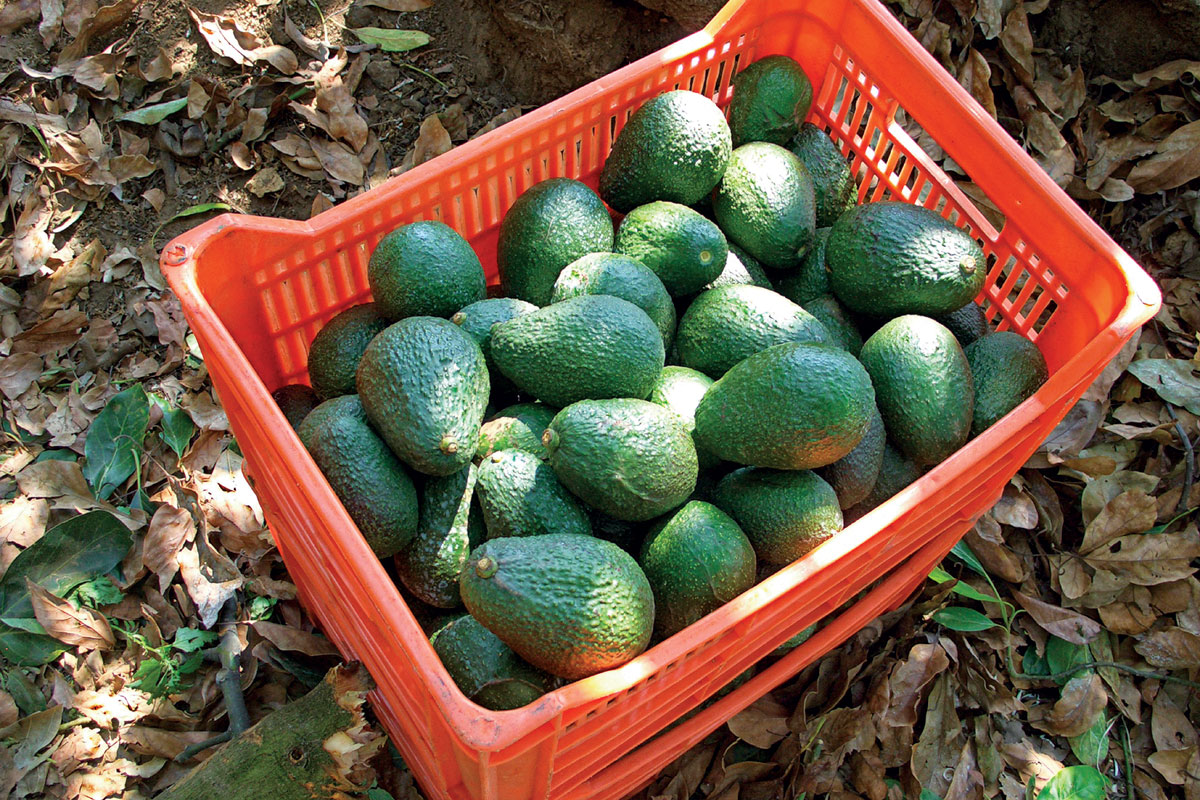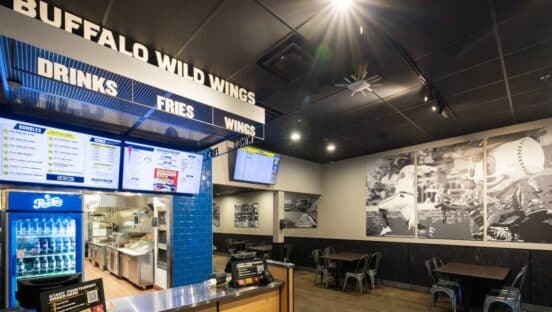Imagine tapping a few keys on a sleek interface or simply prompting that same system with a voice command, and seconds later, you have whatever meal you could imagine ready to eat.
It wasn’t so long ago that such a scenario was nothing more than science fiction, an unrealized wish for the future, wherein food supply was secure, safe, fresh, and near infinite in supply. And in the last few decades, multiple factors have boosted the supply chain with new efficiencies; advancements, from processing animal proteins to boosting crop yields through chemicals and genetic modification, have increased output. Meanwhile, globalization (as well as a robust import/export market) has allowed once-exotic cuisines to plant their flags across the world stage. The fast-casual wave has made innovative foods more accessible than ever before. A hodgepodge of the world’s foods and flavors are within grasp of most Americans.
If it all sounds too good to be true, that’s because it is. Demand and supply may be at an all-time high, but the inversely proportional forces are drifting farther and farther apart. The global population continues to grow at exponential rates; even if production could maintain today’s output levels, it would not be enough. And recent events—wildfires, years-long droughts, the sudden collapse of pollinator colonies—have served as a sobering reminder that even the most streamlined supply system is not impervious to natural forces.
“It’s really difficult to do anything that works well for people, works well for economics, works well for the environment,” says Darryl Mosher, an associate professor at the Culinary Institute of America (CIA) who has also owned and operated his own farm over the past 20 years. “Our approach needs to be holistic, but … I think it’s so much easier to have a handle on a single component versus the large picture.”
Indeed, while rhetoric around sustainability is often limited to the ecological impact, it is, in reality, a multi-faceted system with social and economic ramifications. As the United Nations once clarified, sustainable development should meet “the needs of the present without compromising the ability of future generations to meet their own needs.”
Sustainability sometimes feels like a catch-22; drastic measures could stem the environmental consequences of the global supply chain, but only at great expense to the world economy and consumers at large. The reverse is also true, where agriculture driven only by profit could eventually wipe out natural resources with devastating consequences. In order for the supply chain to survive the current century and beyond, foodservice must take a hard look at its own sustainability practices.
Allocation of resources
California is a major producer of high-value produce and animal proteins, supplying more than a third of vegetables and two-thirds of fruits and nuts in the U.S., but this leads to more fertilizer runoff, reduced air quality, and heightened demand for freshwater. Various groups in California are working in concert to address those byproducts, from incentivizing producers to meet new methane emissions regulations to creating new irrigation strategies. The Almond Board of California (ABC) is helping fund and test such approaches.
Groundwater recharge is another area that the Almond Board is exploring. By flooding orchard trial sites with excess winter storm water, researchers can determine if those reserves increase groundwater and bolster orchard health. “Water recharged through this program would benefit all Californians, not just farmers,” writes Molly Spence, director of ABC, North America, in an e-mail.
Aquifer recharge is a particularly pressing concern on the environmental side of sustainability. According to findings from Kansas State University, the Ogallala Aquifer, spanning eight states and providing 30 percent of irrigated groundwater in the U.S., will be 69 percent depleted by 2064. In fact, the CIA’s Mosher predicts dried-up aquifers may very well be the first exhausted natural resource. And in a system as interconnected as the environment, it would stymie, if not completely stop, the production of other goods.
“The Colorado River, for millions of years, ran to the Pacific; it’s only reached the Pacific twice in the last 20 years. We suck all the water out of it before it even gets to Mexico,” Mosher says. “That’s a classic example of our consumptive needs, largely in agriculture, because agriculture in the U.S. uses almost 80 percent of all pumped water.”
Human capital
South of the Great Plains and the Ogallala Aquifer, groundwater reserves in the “Avocado Belt of the Mexican Republic” are less of a concern. Thanks to its tropical climate, the region of Michoacán is naturally conducive for growing avocados. In fact, the area accounts for some 80 percent of the country’s overall avocado production (estimated at about 1.8 million metric tons of Haas avocados, per the U.S. Department of Agriculture).
Michoacán relies on rainwater for six or seven months of the year to maintain its robust supply; almost three-quarters of orchards don’t irrigate at all. Farmers will store some water should the ground supply need to be supplemented, but it’s not a common practice, says Ramon Paz, strategic advisor of the Avocado Producers and Exporting Packers Association of Mexico, which is under the umbrella Avocados from Mexico (afm) marketing organization.
While its water supply makes for a more sustainable trajectory, Michoacán faces its own ecological challenges. Deforestation to make room for farms has eroded parts of the soil, increasing sedimentation to the detriment of water quality and biodiversity.
“California, for instance, has a problem with water. We have a problem with deforestation; California doesn’t have that particular concern. So environmental issues are the same, but … with very specific requirements locally,” Paz says. He adds that in the last three years, AFM has planted more than a million trees in deforested areas.
Beyond ecological concerns, sustainability in Mexico also comes down to its people. Eighty-one percent of avocado producers in AFM’s export program operate on less than 11 acres of land. And while small-scale farms may not boast the automation of larger operations, there is an increased element of control and oversight, making it easier for farmers to be more adaptive. It’s also significantly easier to introduce new, more sustainable techniques.
Like the “family-owned” descriptor, “local” is often associated with sustainability. And while Mexico may not come to mind as a “local” source, Paz makes the argument Mexican avocados are an eco-friendly choice for American consumers, given the country’s relative proximity to many states.
“I think the concern for local is basically a concern for sustainability. When consumers go local, what they want is to support local communities, local workers, local farmers, and they also want to keep low energy cost and low carbon footprint,” he says. “If this assumption is true, I think avocados from Mexico are in a good position.”
Opportunity cost
For all the challenges facing farmers, the stakes are even higher and the solutions murkier for animal proteins. Inputs like feed, grazing land, processing facilities, and transportation invariably lead to outputs beyond just the final product. According to agriculture research and advocacy outfit the Environmental Working Group, U.S. feed production (soybean, corn, grains, etc.) alone requires nearly 150 million acres of cropland, 167 million pounds of pesticides, and 17 billion pounds of nitrogen fertilizer. Output then comprises greenhouse gases like carbon dioxide and methane, as well as manure.
For some, like the CIA’s Mosher, making meat production more sustainable boils down to a matter of volume. After all, he says, the resource burden of an average diet that includes meat is 10 times greater than a plant-based one.
The philosophy is one upheld by the CIA at large. Not only does the school encourage its students to adopt a more plant-focused culinary approach, but it also hosts an annual symposium, Menus of Change, that connects chefs and other foodservice professionals with academics and researchers.
Teaching the younger generations about conservation may create a ripple effect in terms of consumer demand and dining behavior, but in the meantime, suppliers are hedging their bets.
Some, like the ABC, are investing in sustainability research. (In December, the board announced its latest funding round to the tune of $4.8 million in 64 independent research projects ranging from water efficiency to honey bee health.) Others are assembling brokers from across the supply chain to create guidelines in the hopes they will both be adopted and become the industry standard.
Three years ago, restaurants, cattle ranchers, and nonprofits established the U.S. Roundtable for Sustainable Beef (usrsb), which took the framework of the global roundtable and tailored it to domestic policies and business.
“What the U.S. has done is very specific to what was identified by the U.S. beef industry as the high-priority areas that we felt were critical to focus on,” says Rickette Collins, senior director of sustainable sourcing at McDonald’s and chair of the USRSB. “Each sector is responsible for its own indicators and metrics, as well as its own sustainability assessment guide, but once those are completed, they’re shared with the full membership and everyone has the opportunity to weigh in and give input on those.” She adds that USRSB membership comprises about 30 percent of the overall U.S. cattle herd—roughly 20 billion pounds of beef.
The six high-priority indicators guiding USRSB include animal health and wellbeing; efficiency and yield; water resources; land resources; air and greenhouse gas emissions; and employee safety and wellbeing. In November, it released sustainability metrics—created along with the World Wildlife Fund—to guide members within each segment of the supply chain. The plan is to increase the amount of U.S. beef that’s produced using the roundtable’s sustainability framework from negligible levels to 20 percent by 2020.
Collins says the roundtable’s ability to bring together so many different actors within the beef supply chain is ultimately what makes it unique and innovative. And after more than a decade at McDonald’s working in the supply chain (first in the U.S. and now globally), Collins has a special perspective as to how difficult conservation in the beef industry can be.
“The beef supply chain is really complex and has a lot of touchpoints because it is a very segmented supply chain versus other supply chains where there is more integration,” she says. “That’s probably why the U.S. Roundtable has been so critical—because it is bringing together all these steps within the supply chain and really getting us all in a room together.”
Market pressure
With any problem, the solution, or at least the first step forward, is often the result of an open dialogue. It bodes well for the food supply chain that its future—specifically its ability to be sustained for decades and centuries to come—is a hot-button issue with so many industries lending their voices to the discussion. Some think stricter, government-mandated policies present the best chance for real change, while others insist it’s the foodservice industry’s responsibility to improve its own systems.
A common fable recounts how, when there is an important job to be done, everybody assumes somebody will do it, but nobody ends up doing it. In Mosher’s opinion, meaningful progress could come too late.
“[Change] is going to happen, but I don’t think it’s going to happen strategically. I don’t think [companies] are motivated or inclined to move in that direction,” he says. “We were blessed with resources that we took for granted, but now we’re starting to get some insight that this won’t continue forever.”
Pork producer Smithfield Foods recently completed a 10-year pledge to convert all of its domestic farms to group housing for pregnant sows. It cost the company more than $360 million.
While that conversion is more closely related to animal welfare than sustainability, it serves as an example of the power of consumer pressure.
“That commitment came about mainly because more and more of our customers were making commitments that they wanted to source their pork supply from companies that had those types of housing systems,” says Stewart Leeth, chief sustainability officer at Smithfield. And although group housing isn’t as well publicized as something like cage-free eggs, Leeth says more than 70 companies in the industry (including Smithfield clients) have made commitments to buy pork raised in sow housing.
“When I was growing up, I don’t think anybody really thought about where their food came from or thought about how animals might be treated on a farm, but those questions and interests became more and more prevalent over the last couple of decades,” Leeth says.
Contingency plan
The economics of finite resources demonstrate that it is in the best interest of all producers to protect the collective supply chain. Planning decades or even centuries in advance is not an easy undertaking, especially when corporations have bottom lines to protect and stakeholders to appease. In these cases, concrete numbers could make the somewhat abstract notion of sustainability more relevant.
As big data becomes increasingly detailed, companies are better able to track the environmental impact of any product, from farm to processing to transport to plate. These measurements from entities like the Environmental Working Group show which products exact the highest environment toll (for example, broccoli has a slightly higher footprint than tomatoes) and at which stage (for animal products, it’s during production, while for plants, it’s in processing and transport).
“It starts with information; you can’t manage what you don’t measure,” Mosher says. But even as Mosher is filled with doubt, he has cause for optimism as well.
More businesses—including Unilever, which partners with the CIA—are registering as Benefit Companies or B Corps wherein their success is not just measured by profit, but also by social and environmental impact. In fact, the former designation legally binds companies to adhere to that triple bottom line.
Mosher also predicts his students will be instrumental in driving change and setting up future generations for a more sustainable and abundant food system—even if it’s not fully realized in their lifetimes
“I mostly focus on putting together, for our students, a … seminar view where they get broad exposure and something to think about,” he says. “There are better approaches, and we want [them] to be aware of that.”












